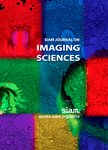版权所有:内蒙古大学图书馆 技术提供:维普资讯• 智图
内蒙古自治区呼和浩特市赛罕区大学西街235号 邮编: 010021

作者机构:Univ Cambridge Dept Appl Math & Theoret Phys Cambridge CB2 1TN England Gener8 Media Corp Vancouver BC V5T 1M6 Canada
出 版 物:《SIAM JOURNAL ON IMAGING SCIENCES》 (SIAM J. Imaging Sci.)
年 卷 期:2017年第10卷第4期
页 面:2049-2090页
核心收录:
学科分类:1002[医学-临床医学] 070207[理学-光学] 07[理学] 08[工学] 0835[工学-软件工程] 0803[工学-光学工程] 0701[理学-数学] 0812[工学-计算机科学与技术(可授工学、理学学位)] 0702[理学-物理学]
基 金:Cambridge Commonwealth Trust Cambridge Center for Analysis Leverhulme Trust project Breaking the Non convexity Barrier EPSRC [EP/M00483X/1, EP/N014588/1] Cantab Capital Institute for the Mathematics of Information CHiPS (Horizon RISE project grant) Global Alliance project Alan Turing Institute EPSRC [EP/M00483X/1, EP/N014588/1, EP/J009539/1] Funding Source: UKRI
主 题:image processing image inpainting 3D conversion PDEs parallel algorithms GPU
摘 要:The conversion of traditional film into stereo 3D has become an important problem in the past decade. One of the main bottlenecks is a disocclusion step, which in commercial 3D conversion is usually done by teams of artists armed with a toolbox of inpainting algorithms. A current difficulty in this is that most available algorithms either are too slow for interactive use or provide no intuitive means for users to tweak the output. In this paper we present a new fast inpainting algorithm based on transporting along automatically detected splines, which the user may edit. Our algorithm is implemented on the GPU and fills the inpainting domain in successive shells that adapt their shape on the fly. In order to allocate GPU resources as efficiently as possible, we propose a parallel algorithm to track the inpainting interface as it evolves, ensuring that no resources are wasted on pixels that are not currently being worked on. Theoretical analyses of the time and processor complexity of our algorithm without and with tracking (as well as numerous numerical experiments) demonstrate the merits of the latter. Our transport mechanism is similar to the one used in coherence transport [F. Bornemann and T. Marz, J. Math. Imaging Vision, 28 (2007), pp. 259-278;T. Marz, SIAM J. Imaging Sci., 4 (2011), pp. 981-1000] but improves upon it by correcting a kinking phenomenon whereby extrapolated isophotes may bend at the boundary of the inpainting domain. Theoretical results explaining this phenomenon and its resolution are presented. Although our method ignores texture, in many cases this is not a problem due to the thin inpainting domains in 3D conversion. Experimental results show that our method can achieve a visual quality that is competitive with the state of the art while maintaining interactive speeds and providing the user with an intuitive interface to tweak the results.